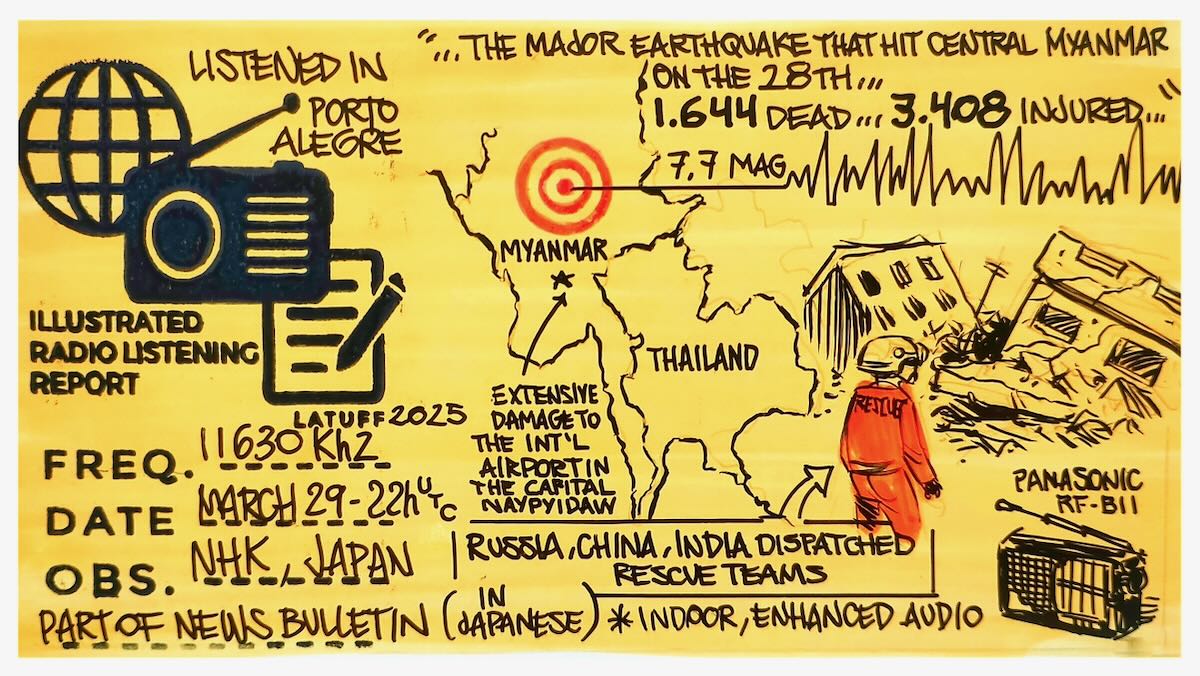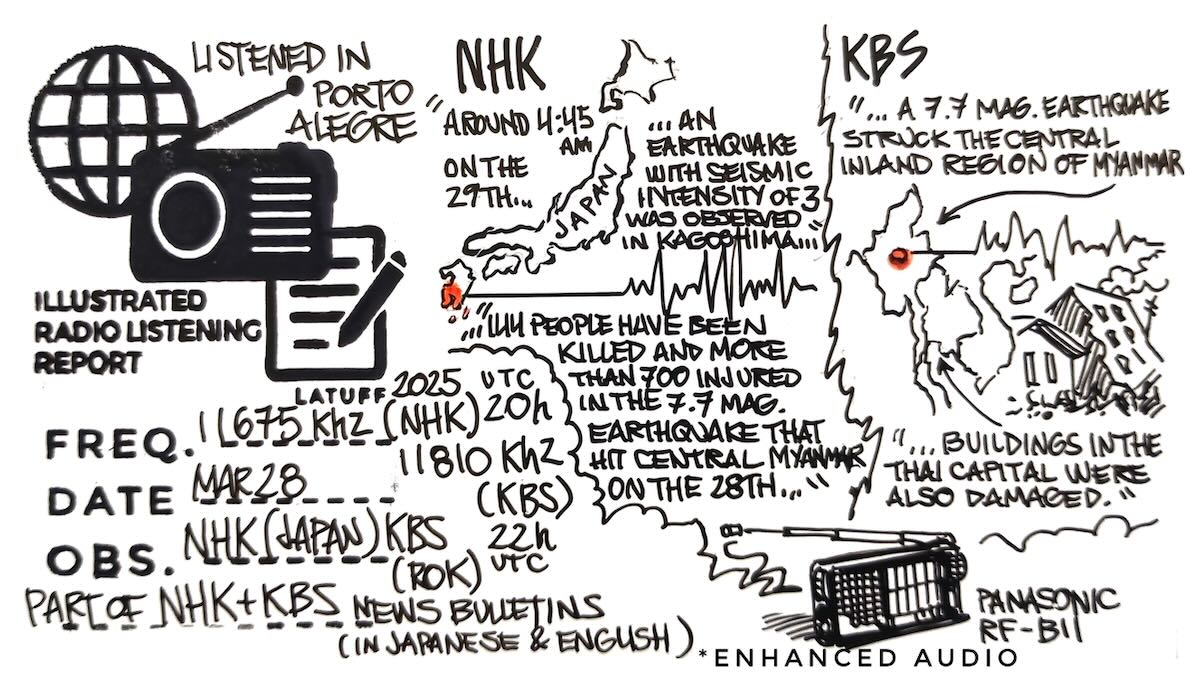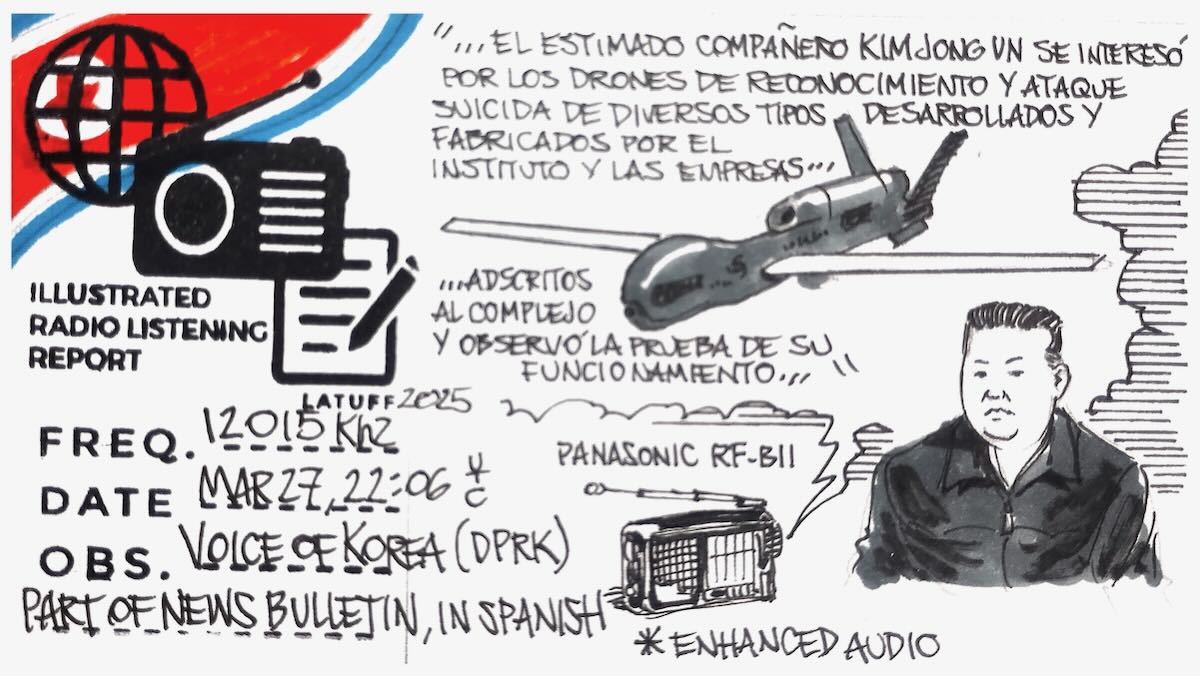Many thanks to SWLing Post contributor and noted political cartoonist, Carlos Latuff, who shares an illustrated radio listening report of recent CNR and CGTN broadcasts.
Carlos notes:
China, ASEAN steps up humanitarian aid to Myanmar: CNR and CGTN Radio
Part of news bulletins from China National Radio (CNR) and China Global Television Network (CGTN) Radio, in Chinese and English respectively, about China and The Association of Southeast Asian Nations (ASEAN) earthquake relief efforts in Myanmar. Listened in Porto Alegre, Brazil, on a Panasonic RF-B11 receiver.







